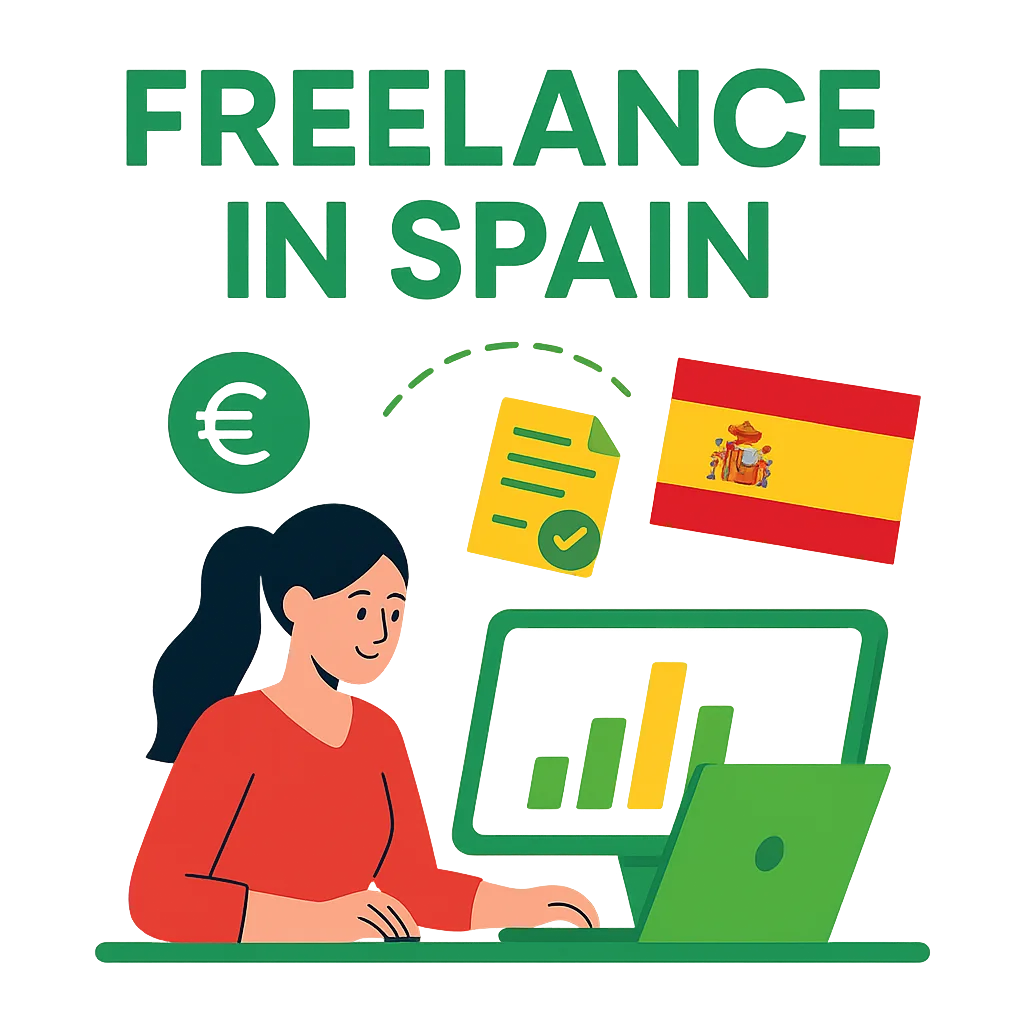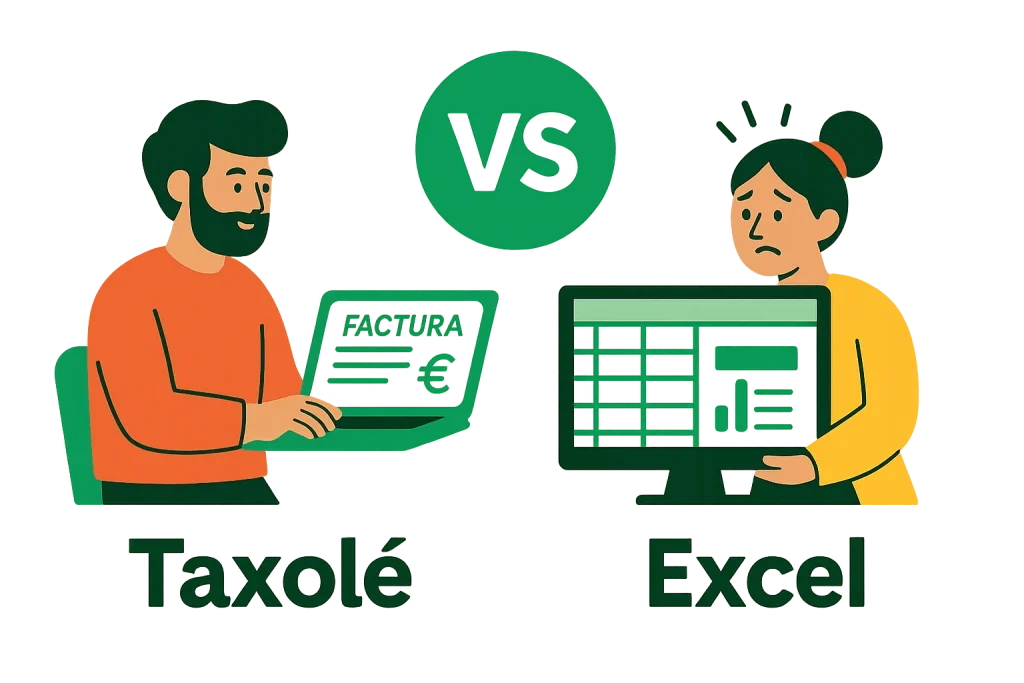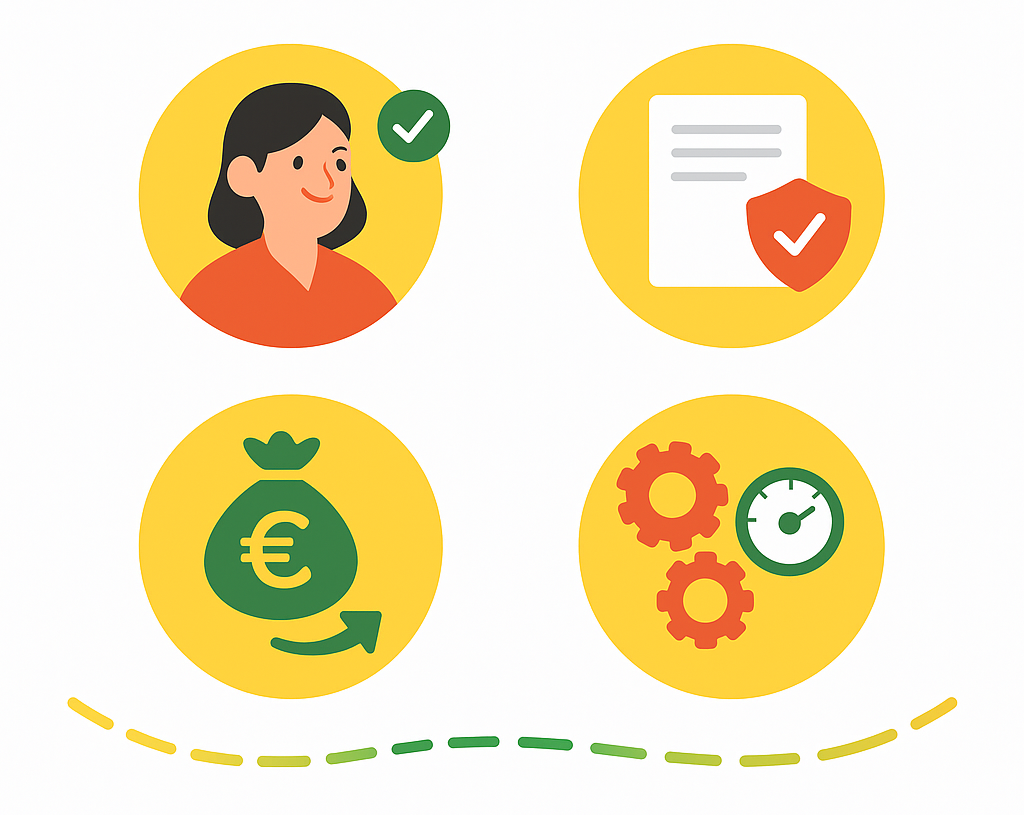How to Avoid the Top 5 Most Common Invoicing Mistakes
You’ve just sent a factura to a client. You close your laptop, take a sip of your café con leche, and then it hits you. That tiny, ice-cold feeling of panic in the pit of your stomach. “Did I calculate the IVA correctly? Was the invoice number right? Oh god, did I remember to add the IRPF?”
Relax, amigo. We’ve all been there. Creating invoices in Spain can feel like walking through a minefield of bureaucratic rules. One small slip-up, and you risk looking unprofessional, delaying your payment, or even getting a nasty letter from the Hacienda.
But fear not! We’re here to be your guide. Think of us as your savvy local friend who knows all the tricks. We’re going to expose the top 5 most common invoicing mistakes that entrepreneurs in Spain make, and more importantly, show you how to avoid them like a matador dodges a bull.
Mistake #1: The Creative Numbering Fiesta (A Big No-No)
This is the king of all common invoicing mistakes. You start your year with “Invoice_001”, then the next is “Factura_Cliente_B”, and by March, you’re on “Urgent-Invoice-Final-v2”. It feels creative, but for the Spanish tax agency, it’s a giant, flashing red light.
The Rule: Your invoice numbers MUST be sequential and consecutive for each fiscal year, without any gaps. For example: F2025/001, F2025/002, F2025/003…
Why it’s a Problem: Random or broken sequences suggest that you might be hiding invoices or that your accounting is a mess (un jaleo). It’s the first thing an inspector will look for.
How to Avoid It:
- Manually: Keep a ridiculously meticulous log in a separate notebook. (Boring!)
- The TaxOle Way: Forget about it completely. TaxOle automatically assigns the correct, sequential number to every single invoice, forever. It’s impossible to mess it up.
Mistake #2: The ‘Typo of Terror’ in the NIF
The NIF (Número de Identificación Fiscal) is the unique tax ID for you and your client. It’s the most critical piece of data on the entire invoice. Getting just one letter or number wrong is one of the most damaging common invoicing mistakes.
The Rule: The NIF of both the issuer (you) and the receiver (your client) must be 100% correct.
Why it’s a Problem: If your client’s NIF is wrong, they cannot legally use your invoice to deduct the IVA. They will have to ask you to issue a corrective invoice (factura rectificativa), which means payment delays and extra paperwork for you. It makes you look unprofessional and creates a huge headache for your client.
How to Avoid It:
- Manually: Triple-check every single NIF against your client’s official data before sending. (Tedious!)
- The TaxOle Way: Save your clients in your contact database. The first time you enter their details, you check them carefully. From then on, you just select their name from a dropdown, and TaxOle fills in the correct, verified NIF every single time.
Mistake #3: The Great Tax Mix-Up (IVA vs. IRPF)
Welcome to the main event, the cause of most expat nightmares. Misunderstanding the difference between IVA (VAT) and IRPF (income tax withholding) is at the top of the list of common invoicing mistakes.
The Rule:
- IVA (VAT): This is a tax you collect for the government. For most services, it’s 21%. You add it to your price.
- IRPF (Withholding): This is a pre-payment of your own income tax. If you are an autónomo providing professional services to a Spanish company or another autónomo, you must subtract a percentage (usually 15%, or 7% for new freelancers) from your price.
Why it’s a Problem: Getting this wrong is a direct route to trouble. Charging the wrong IVA can lead to penalties. Forgetting to apply IRPF means you’ll face a much bigger tax bill at the end of the quarter, as you haven’t pre-paid anything.
How to Avoid It:
- Manually: Keep a calculator handy and pray you remember the rules for every single client. (Stressful!)
- The TaxOle Way: We turn this complex tax puzzle into a simple checkbox. In your settings, you tell us you’re an autónomo. When you create an invoice for a Spanish company, TaxOle automatically calculates and applies both the correct IVA and IRPF. No math, no stress. Avoiding these common invoicing mistakes is our specialty.
Mistake #4: The Ghost Invoice – Forgetting Key Details
You’re in a hurry, so you quickly type up the invoice. You add the price, the client’s name, and send it off. A week later, your client emails you: “What was this for again? And what’s your full address?”
The Rule: A Spanish invoice must legally contain several key pieces of information: your full name and address, your client’s full name and address, the invoice date, a clear description of the services (concepto), and the due date.
Why it’s a Problem: A vague or incomplete invoice is unprofessional and often leads to payment delays. The client’s accounting department might reject it, forcing you to start the process all over again.
How to Avoid It:
- Manually: Create a checklist and review it neurotically before hitting “send.” (Time-consuming!)
- The TaxOle Way: Our invoice template has required fields for all the essential information. The system won’t let you finalize an invoice until all the legally required data is present. It’s your built-in safety net against making these common invoicing mistakes.
Mistake #5: Sticking with an Outlaw Tool (Like Excel)
Perhaps the biggest mistake of all in the post-Verifactu era is using the wrong tool for the job.
The Rule: From January 1, 2026, any software used for invoicing must be compliant with the Verifactu law, which means it must be tamper-proof and create a secure chain of records.
Why it’s a Problem: Tools like Word and Excel are the complete opposite of this. They are easily editable, have no security trail, and cannot generate the required QR codes or digital signatures. Using them for invoicing after the deadline is illegal and punishable by massive fines.
How to Avoid It:
- This one is simple. Ditch the spreadsheet. It had a good run, but its time is over. Switch to a dedicated, compliant invoicing software.
Invoice Like a Pro, Not a Principiante
There you have it—the five most common invoicing mistakes that can cause you stress, cost you money, and damage your professional reputation.
The good news? Every single one of them is 100% avoidable. With a little knowledge and the right tool, you can go from worrying about every invoice to sending them with the confidence of a seasoned pro. TaxOle was built specifically to eliminate these errors, automating the rules so you can focus on your work.






